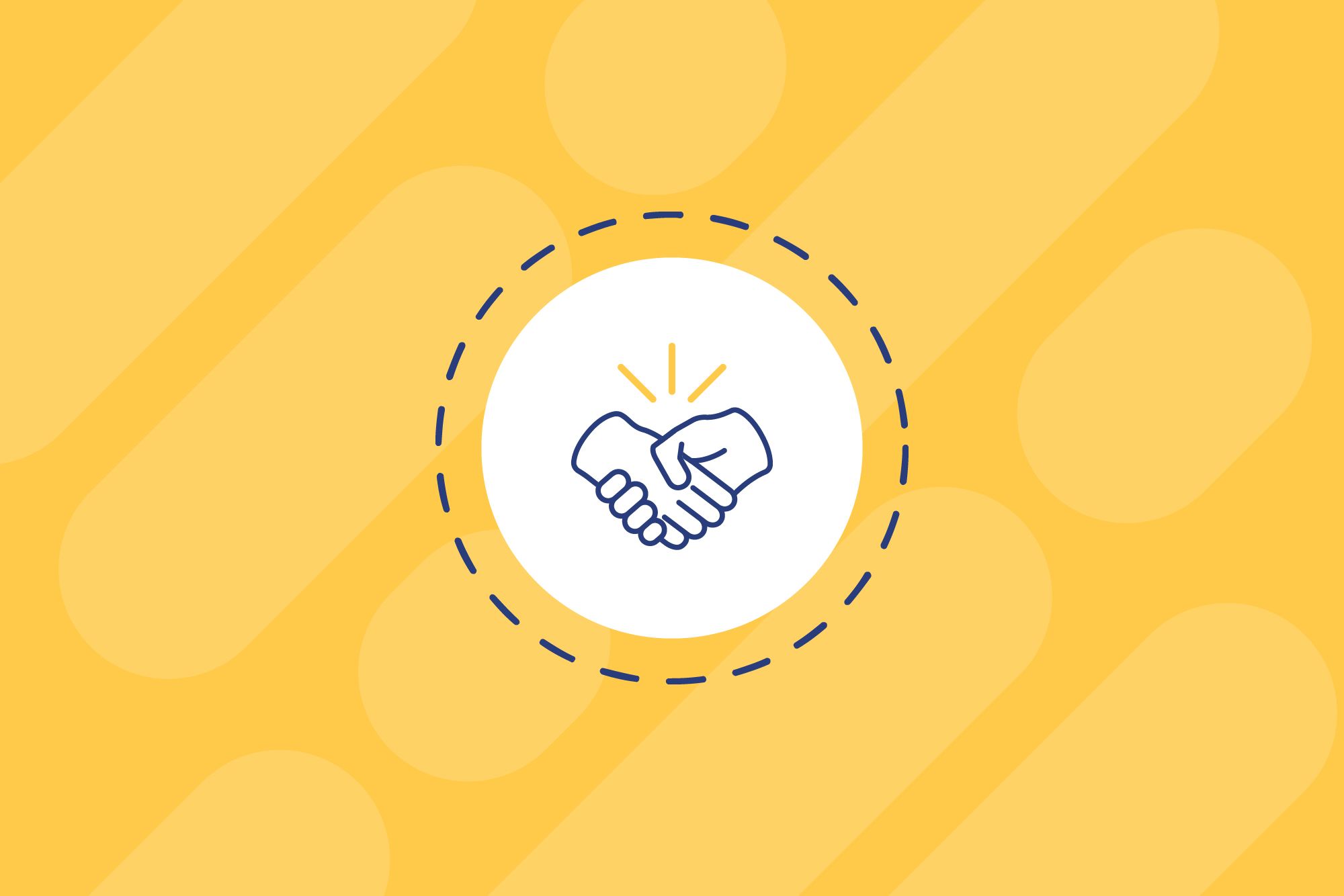If you’ve ever tried to make or break a habit, you know that effecting change is difficult and takes time. According to scientific research*, it takes 66 days on average to form a new habit. It requires consistent, sustained effort rather than a single outlandish burst of motivation.
Suppose you want your product to become your new customers' next habit. In that case, you’re not going to accomplish this by hurrying them through your five-point product tour checklist.
In this guide, we list seven SaaS onboarding best practices that will help your new customers integrate your product into their routine and become lifelong users.
Here are our best practices for SaaS onboarding:
- Start with a question
- Focus on value, not features
- Pace yourself
- Get out the way
- Only ask for information you’ll use
- Keep new users in the product
- Let new users “raise their hand”
To learn about these best practices and how to take your onboarding to the next level, read on.
Want your customers to self-serve their needs in your application?
Stonly adapts onboarding and in-app help to create successful outcomes for any ability level or need.
Start FREE Trial
7 Best Practices to Ensure SaaS Onboarding Success for Customers
1. Start with a Question
When you’re designing an onboarding experience for a product, you’ve likely had a hand in building the product, too. You’ve put a lot of hard work into making the product function well and serve the needs of your customer base. You’re proud of it, and you want to show it off.
If this sounds like you, you need to be very careful when building your onboarding experience. The temptation will be to start by adding a bunch of tooltips, highlighting your favorite features and the ones that differentiate your product the most.
The problem with this approach is you’ll be focusing more on features you’re excited about and not allowing users to make that choice for themselves.
The better approach is to ask your new users questions and allow them to indicate what they’re looking to get out of your product. This way, you can position several different onboarding paths and help users select the one that’s most likely to lead to them finding their version of success as quickly as possible.
Starting with a question provides a level of interactivity in your onboarding approach that puts your users in the driver’s seat.
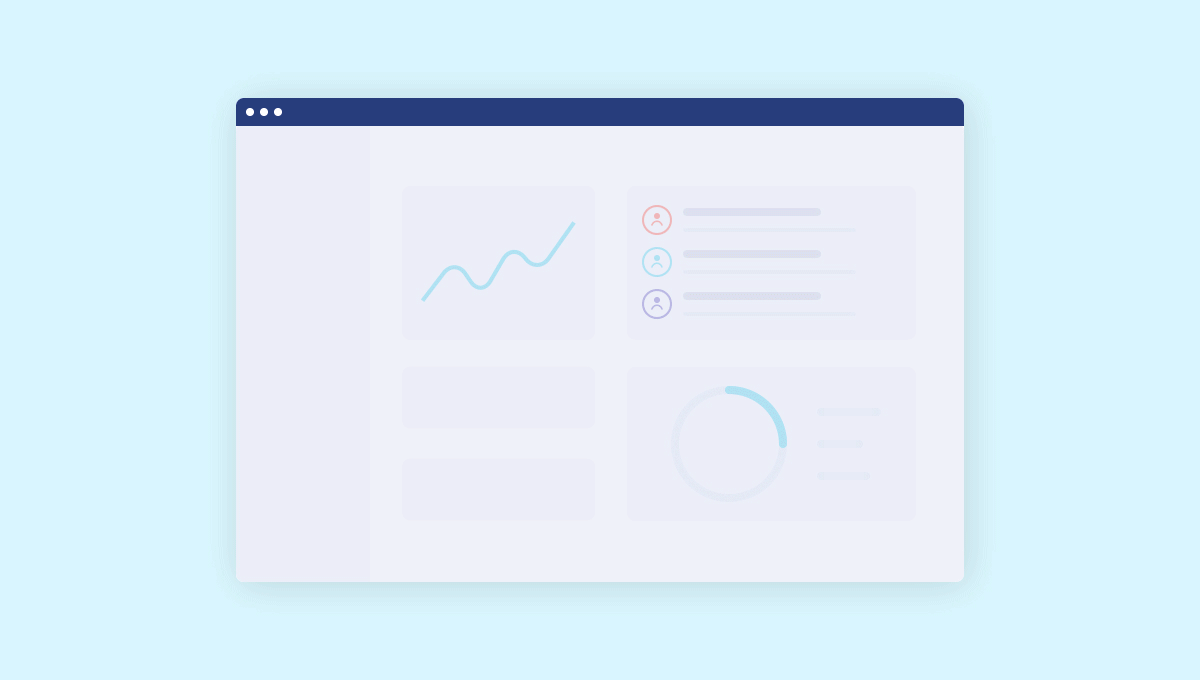
For example, asking users when they arrive how they would like to use the app is a simple yet effective way to build interactivity in the onboarding experience and lets users tailor the experience to their specific needs.
Many SaaS onboarding software tools are built for a one-size-fits-all linear approach to product onboarding, so you’ll need to partner with a tool such as Stonly that embeds interactivity in all of its guides.
2. Focus on Value, Not Features
One of the biggest mistakes SaaS companies make in their onboarding process is thinking the goal of onboarding is to help new users become better at using the product. That’s right, the goal of user onboarding isn’t really about your product at all.
User onboarding aims to help users better do what your product is designed to enable them to do.
In other words, your onboarding process should focus on the value your product provides rather than the features themselves. A new user will eventually churn—even if they become masterful at using the most important feature of your product—if it doesn’t add value for them.
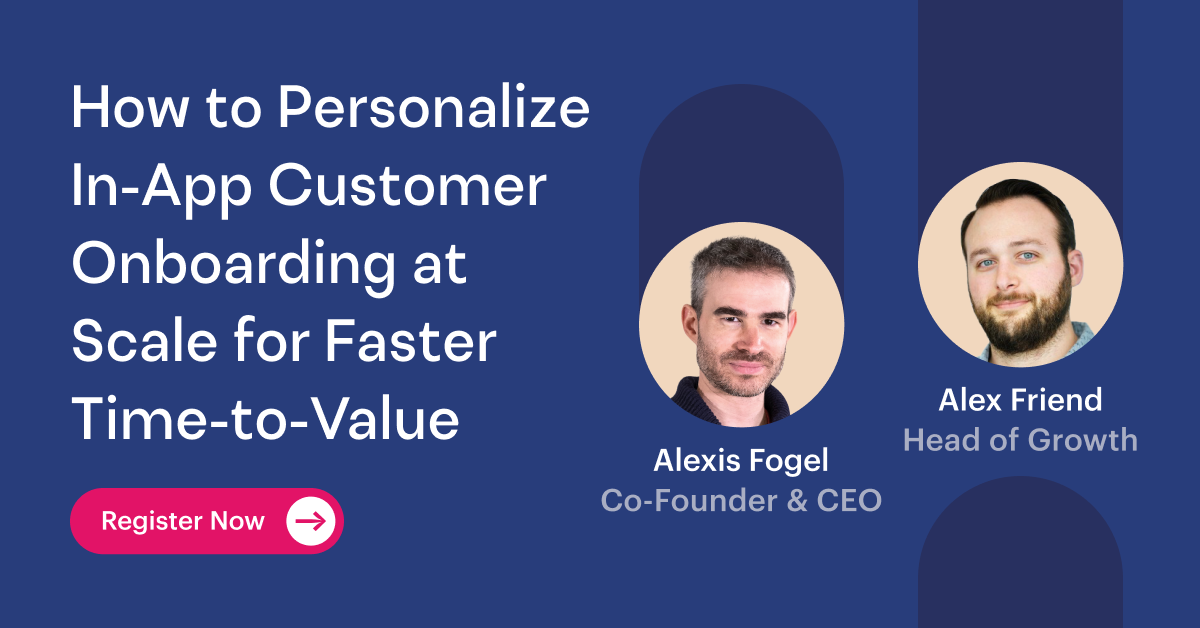
Let’s Try an Example
A language learning app markets its product with the value proposition that in exchange for spending a few minutes in the app, you can become conversant in a foreign language. You’ve been wanting to brush up on the Spanish you learned in high school to help you better communicate with your Spanish-speaking colleagues at work, so you decide to give it a try.
During onboarding, you follow a sequence of tooltips that show you how you can start a new lesson, save your progress, and complete the mastery check at the end of the lesson. You’re energized and excited about the new features and begin your first lesson: all about talking about the weather.
You get through it, and the next lesson is about phrases you can use on a date. And the next lesson is about ordering food at a restaurant.
After a while, you realize that while you may be improving some aspects of your Spanish, it’s not helping you converse with your colleagues in your work setting. You start losing the excitement of making progress in the app—even with all of its digital trophies and encouraging trumpet sound effects—and eventually stop using it altogether.
Instead of focusing onboarding on showcasing all of the app’s features, a better experience would have been discovering your motivation for learning the language and showing you how you can tailor your experience specifically to help you get the value you were expecting.
3. Pace Yourself
Suppose you’re involved in building an onboarding experience for a SaaS product. In that case, it’s very likely you know the product inside and out. While this level of product expertise is certainly helpful in describing how the product works to a first-timer, it may also be your Achilles’ heel, inhibiting you from delivering a valuable onboarding experience.
When you put yourself in the shoes of a new user, you start to remember what it’s like to see your product for the first time. Even the most simple user interface can be overwhelming for brand new users.
Fight the urge to want to showcase all your product’s bells and whistles during the first onboarding session. Pace yourself. Focus on one feature at a time.
This is where our first tip becomes incredibly important. Suppose you don’t know your new users’ motivation for coming to your app, and you’re limiting yourself to only showcasing one part of your product at a time. In that case, you’re at risk of showcasing the wrong part to the wrong user and losing their interest.
But building in interactivity from the start allows you to present the user with options and let them choose which onboarding path to take to realize their version of success. In this case, there’s no need to worry about covering all your features as long as they’ve found the ones that matter most in delivering the value they expect from your product.
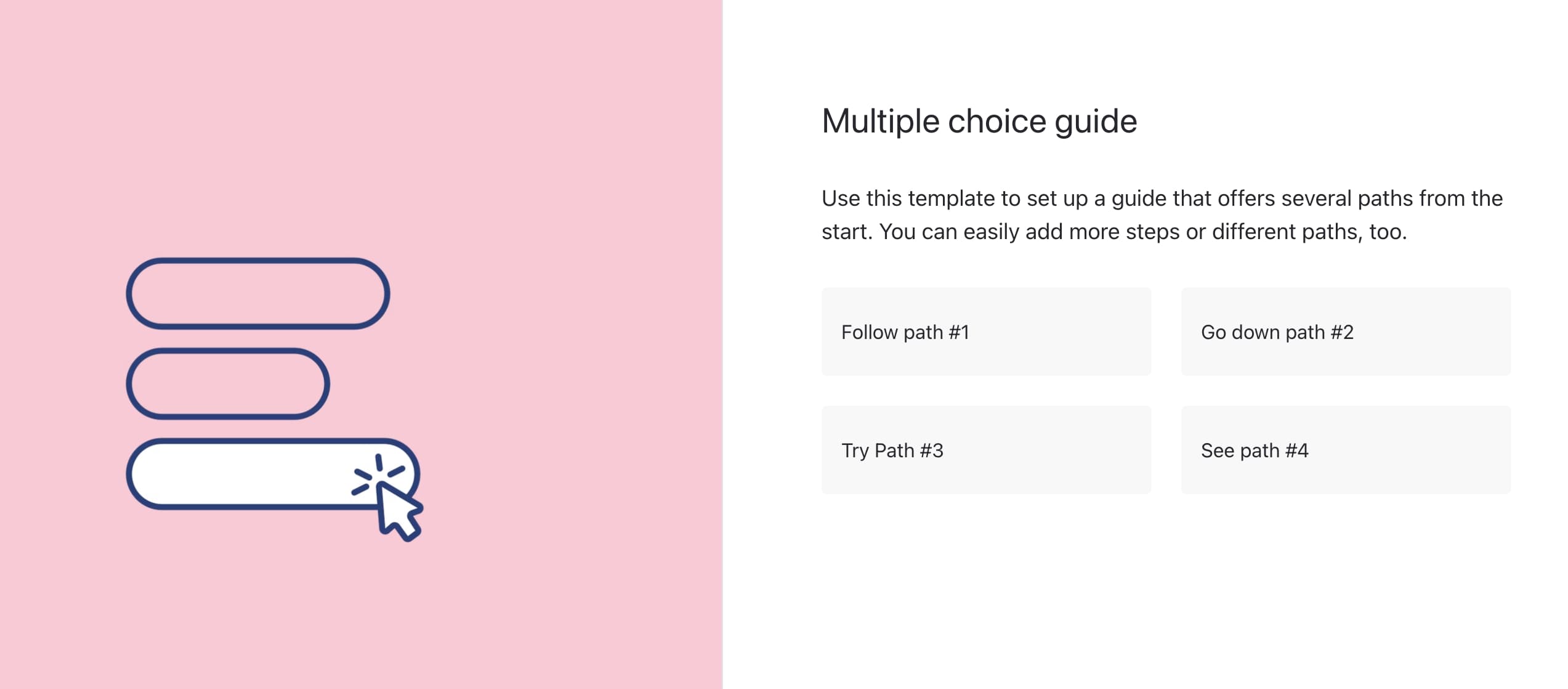
4. Get Out the Way
Once you understand onboarding is all about helping the user do what your product is designed to enable them to do, get out the way as soon as new users reach that point.
When your onboarding experience is focused on helping users learn how to use your product, you’ll naturally feel onboarding is “done” once new users have successfully used all of your features.
But this approach is annoying for users already using all the features they need. Continually asking users to learn about features that have no relevance to them sours the onboarding experience.
This starts with understanding why users use your product in the first place. You've succeeded if you’ve started with a question and focused on helping the user realize their version of success. There’s no reason to continue badgering users when you have evidence they’ve got what they were looking for.
But what if your data suggests users who adopt a higher number of key features become more sticky? Shouldn’t you do everything you can to get them to use these features?
Suppose this is the case in your SaaS business. In that case, you’re dealing with a user adoption problem instead of a user onboarding problem. Remember, onboarding is all about helping them do what your product is designed to enable them to do.
But improving user adoption is about helping them take the next steps in becoming life-long, power users of your product. That process takes time and is beyond the scope of the initial onboarding experience.
Check out this guide to read more about implementing an effective SaaS user adoption strategy.
5. Only Ask for Information You’ll Use
One of the most important rules of thumb for SaaS companies in regards to the data you request from users is to only ask for information you plan on actually using.
Too often, those in charge of designing onboarding experiences take shortcuts in just copying what their competitors or other companies in their industry are doing. Don’t ask for a new user’s job title just because every other onboarding experience you’ve seen asks for it.
Understand why that information is useful to you and help provide a better experience for the user.
For example, if you’re applying the first few best practices in this guide and are trying to let users make choices about their onboarding experience, asking for job titles could be a great way to investigate whether users with certain job titles choose one path over another.
This information could help you do a better job nudging users in the future with that job title, making them feel like you better understand them and their needs.
6. Keep New Users in the Product
One of the quickest ways to kill the momentum for a new user during onboarding is taking them outside of your product to answer a question or get a deeper dive into a particular feature or use case of your product.
When users express interest in a particular area of your product, ensure that they can get their questions answered quickly inside the product to jump right back to their journey toward activation.
Deploying in-app guides and widgets is a great way to help new users have access to a wealth of information without having to navigate away to a dedicated support site. Launching these guides within the app using hints and tooltips is a great way to avoid overwhelming users while allowing them to dig deeper if they have questions.
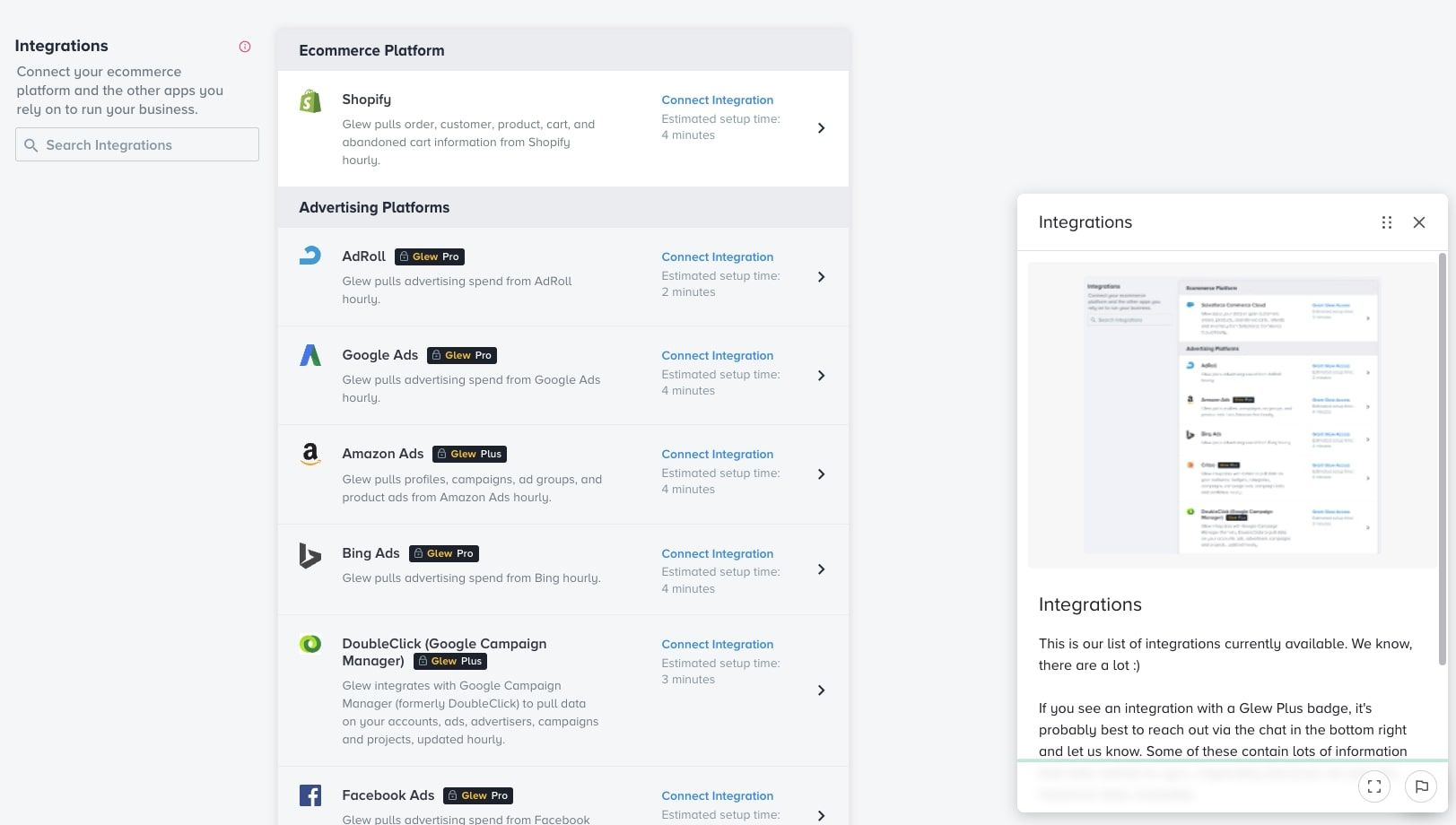
Here, you can see Glew using pop-up guides with helpful information and supporting images activated by clicking the tooltip icon. Also, you can click a question mark to launch a welcome tour guide.
7. Let New Users “Raise Their Hand”
There may be cases where the expected paths that you present to new users may not be enough to solve their particular onboarding needs. In these cases, it is important to give users the ability to “raise their hand”, and express interest in learning about an area of your product they can’t find through the onboarding experience.
There are many ways to let users do this. You could include calls to action throughout your onboarding experience, asking users with additional questions to add them to a short form. You could also embed a widget with a contact form to let users ask questions or give feedback at any step in the process.
Depending on your business and approach, you could get in touch with these users to help them learn more about their unique use case and situation or collect and analyze these submissions to inform future iterations of your onboarding experience.
Related Post: B2B SaaS Onboarding: A Self-Serve Approach
Take Your SaaS Onboarding to the Next Level
Onboarding new users is a critical piece of the customer value journey, helping new users activate quickly and increasing their chance of becoming long-term users.
Implementing these best practices (whether you are focused on B2C, B2B, or Enterprise SaaS onboarding) will improve new user activation to convert more of your hard-earned new user acquisitions into sticky users.
Stonly facilitates these best practices with its interactive approach to onboarding that puts customers in the driver’s seat.
Want more people to get immediate value from your product?
Stonly helps more people successfully navigate, and self-serve their needs in your website or application.
Start FREE Trial
Frequently asked questions about SaaS onboarding best practices
What does onboarding mean in SaaS?
Onboarding in SaaS is the process you implement to guide new users to discover their version of value and success when first starting to use your product. Sometimes user onboarding is thought of as just adding some tooltips and product tours, but it is more than that.
Onboarding is any intentional activity that a company puts in place, whether in-app, via email or messaging, or even in person, that helps guide a new user toward successful activation.
How do you create a good onboarding experience?
A good onboarding experience is more than showing a new user where to click to use a feature—it’s guiding a user to find their version of value and success within the product. Creating a good onboarding experience includes allowing the user to indicate their reason for using the app, giving them all the information and tips necessary that help them be successful in their reason for using the app, and then getting out of the way.
Which company has the best onboarding experience?
There isn’t a way to know which company definitely has the best onboarding experience, but here are some SaaS onboarding examples that are very effective. Some of our favorites include Dropbox, Slack, and Duolingo.
How do you best engage users during onboarding?
The best way to engage users during onboarding is to provide them with the most relevant information tailored specifically to them. The problem is that you may not have enough data about them to know what’s most relevant, especially with new users. Building flexibility into the onboarding process, where users can choose which path they go down based on their own needs, is the best way to engage users and progress them towards activation.

